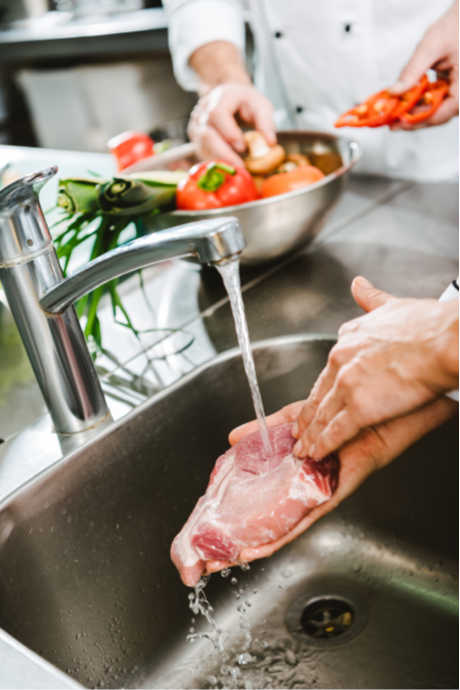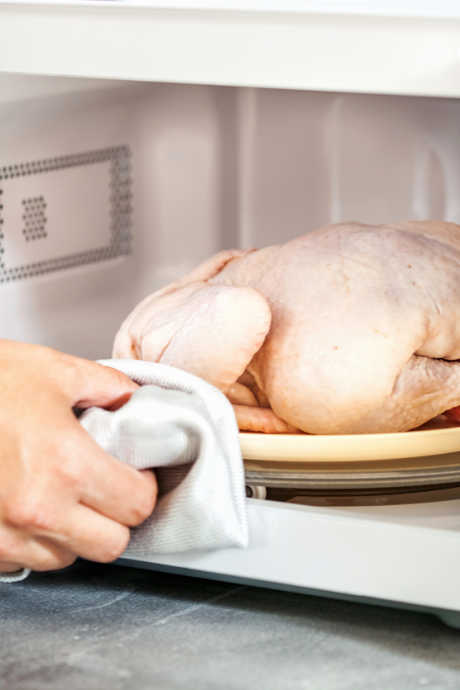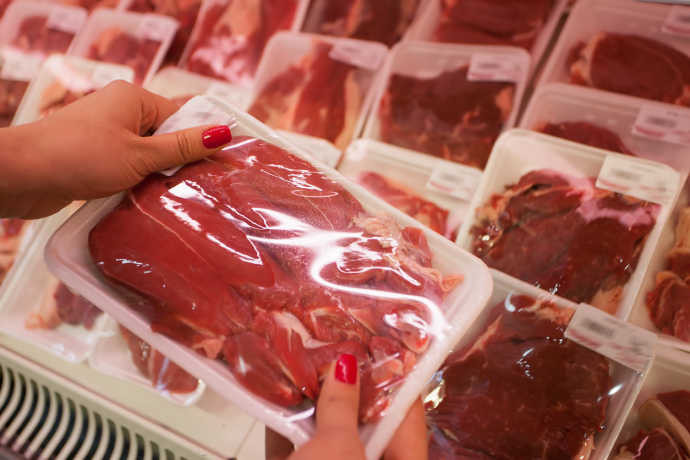Safe Ways to Defrost Meat
Posted by Julie on Aug 30th 2019
Now that summer is drawing to a close and our days are busier than ever, we’re striving to get back into meal planning mode. Whether you do your own meal planning or rely on an app to keep yourself organized, occasionally we all find ourselves in a tight spot at dinner time. One of the most challenging situations is when the meat you plan to cook is still fully frozen at five o’clock. In this post, we’ll cover the best ways to defrost meat while minimizing food safety risks.
Key Info to Know
Food safety is the greatest consideration when defrosting and cooking meat. Bacterial growth takes place within the temperature range between 40ºF and 140ºF. That’s why it’s important not to defrost meat on the counter; it will soon reach that “danger zone” even before it’s fully thawed, and any bacteria already present will begin to multiply.
Frozen meat still contains bacteria. Freezing meat prevents bacteria from growing, but it doesn’t kill bacteria. For the sake of food safety, you should assume that all meat contains some bacteria and ought to be cooked to a safe minimum internal temperature to kill that bacteria.
The Safest Choice: Refrigerator
Every source we found, from food websites and trained chefs to the US Department of Agriculture itself, agrees the safest and best way to defrost meat is in the refrigerator. There are two primary reasons to choose this method whenever possible.

1. Minimal bacteria: Your refrigerator temperature should be set to 40ºF or below. This temperature range slows the growth of bacteria present in all foods. When perishable foods reach temperatures over 40ºF, bacteria start to multiply rapidly.
2. Better texture: When meat is frozen and thawed, ice crystals form and melt. While you can’t see how the ice affects the structure of the meat, you can tell a difference when you cook and eat it. Thawing meat slowly in the refrigerator melts the ice crystals gently, with less damage to the meat.
Of course it takes prior notice to defrost meat in the refrigerator, which is why we advocate for meal planning. The time required depends on the amount of meat. A Thanksgiving turkey will take significantly longer to thaw than a pound of ground beef or a package of chicken thighs.
The Next-Best Choice: Cold Water
But we know that if you’d planned ahead, your meat would already be thawed in the refrigerator, and you’d be cooking dinner instead of reading this post. If you need to defrost a pound of meat in the next hour, this method is for you.
Start by transferring your frozen meat from the grocery store packaging to a zip-top plastic bag or other sealed container. This step reduces the likelihood of spreading bacteria. It also keeps your meat from coming into contact with the water, which can adversely affect its texture.
Place the bag or container of meat in cold water. You can fill up your sink with cold water, or use a large bowl or plastic container. Keep your package of meat submerged, and change the water every half-hour. It will take a while to thaw, so we suggest you finish the rest of your meal prep tasks as your meat defrosts.

Scrub your sink afterward to be sure no bacteria are lingering, even though you used a zip-top bag or a sealed container to hold the raw meat. Too few home cooks clean their sinks (or other areas of their kitchen) as thoroughly as they should.
An Alternate Next-Best Choice: Dripping Water
This method comes from one of the writers at The Kitchn, who learned it in culinary school. It’s approved by the National Restaurant Association.
First, remove the grocery store packaging from your frozen meat and fill a bowl with lukewarm water. While this method instructs users to place the raw meat directly into the bowl, we prefer to err on the safe side and put it in a zip-top plastic bag. Use the pressure of the water to help push air out of the bag as you seal it.
Then put the bowl in your sink, and turn on the tap so that cold water is dripping into the bowl. This strategy helps prevent bacteria from growing, and also keeps the temperature in the right range for thawing. You won’t need to swap out the water in the bowl, but keep an eye on it to monitor defrosting progress.
Once your meat is thawed, you should scrub your sink thoroughly. Do this even if you placed the meat in a zip-top bag, for the same reasons we noted above.
Least Favorite Choice (But Still Works): Microwave
We’re not fans of defrosting meat in the microwave, but it’s a safe option and deserves a mention. Because your microwave will raise the temperature of your meat over 40ºF and start to cook it in spots, don’t defrost until you are ready to transfer the meat directly to your cookware. Otherwise, you run a greater risk of bacterial growth.

One More Option to Consider: Cook Frozen Meat
While it’s not optimal, it is safe to cook meat that’s still frozen. Of course you won’t be able to slice it or bread it beforehand, and the ice crystals will melt rapidly and may damage the structure of the meat. It will also release moisture as those ice crystals melt. Therefore, we’re more inclined to use wet cooking methods such as braising or stewing when cooking meat that isn’t defrosted. Dry cooking methods, like roasting or grilling or baking, will be less effective because of the moisture. Finally, budget some extra cooking time. The USDA food safety page anticipates frozen meat will take up to 50% longer to cook than thawed meat.
 Free shipping over $49
Free shipping over $49










